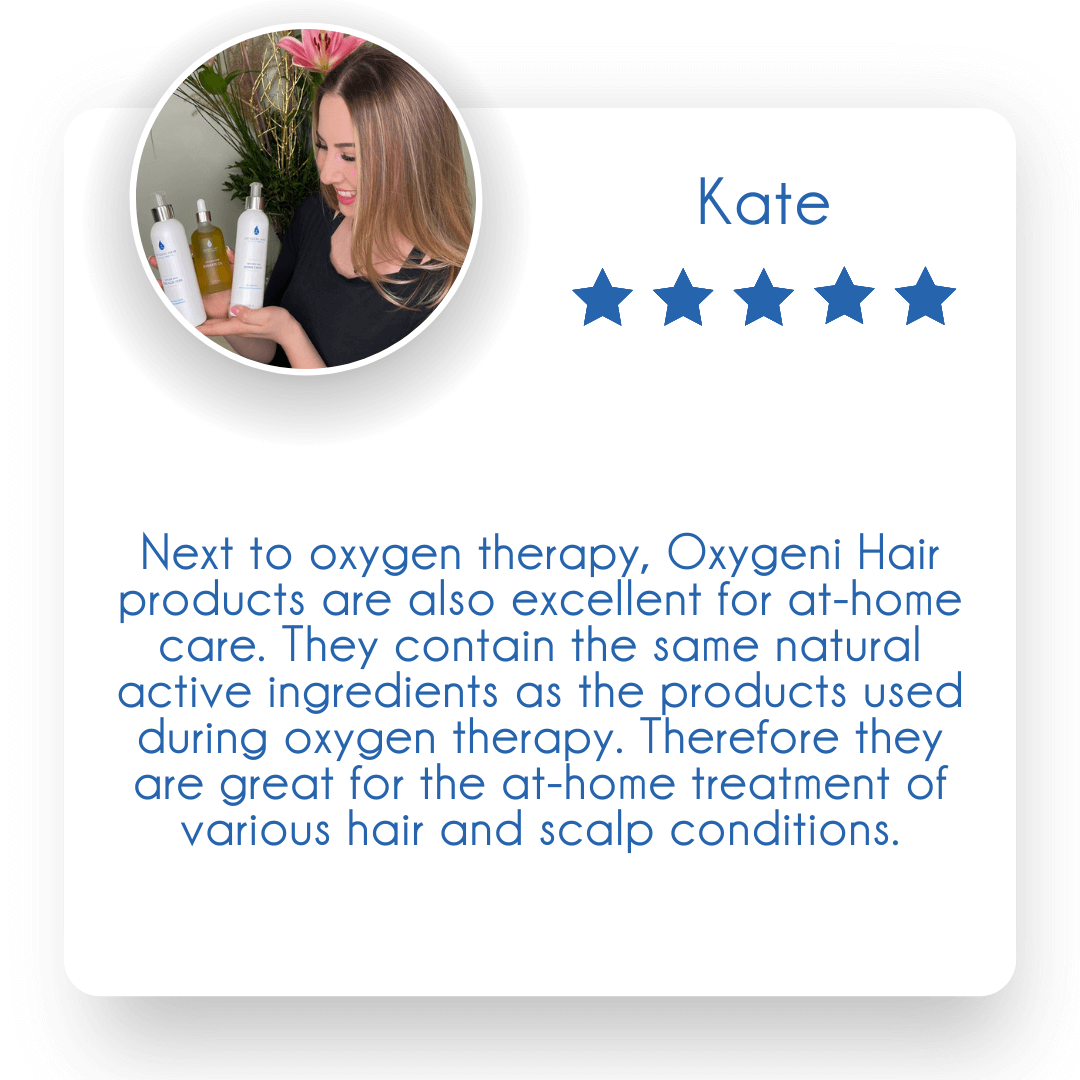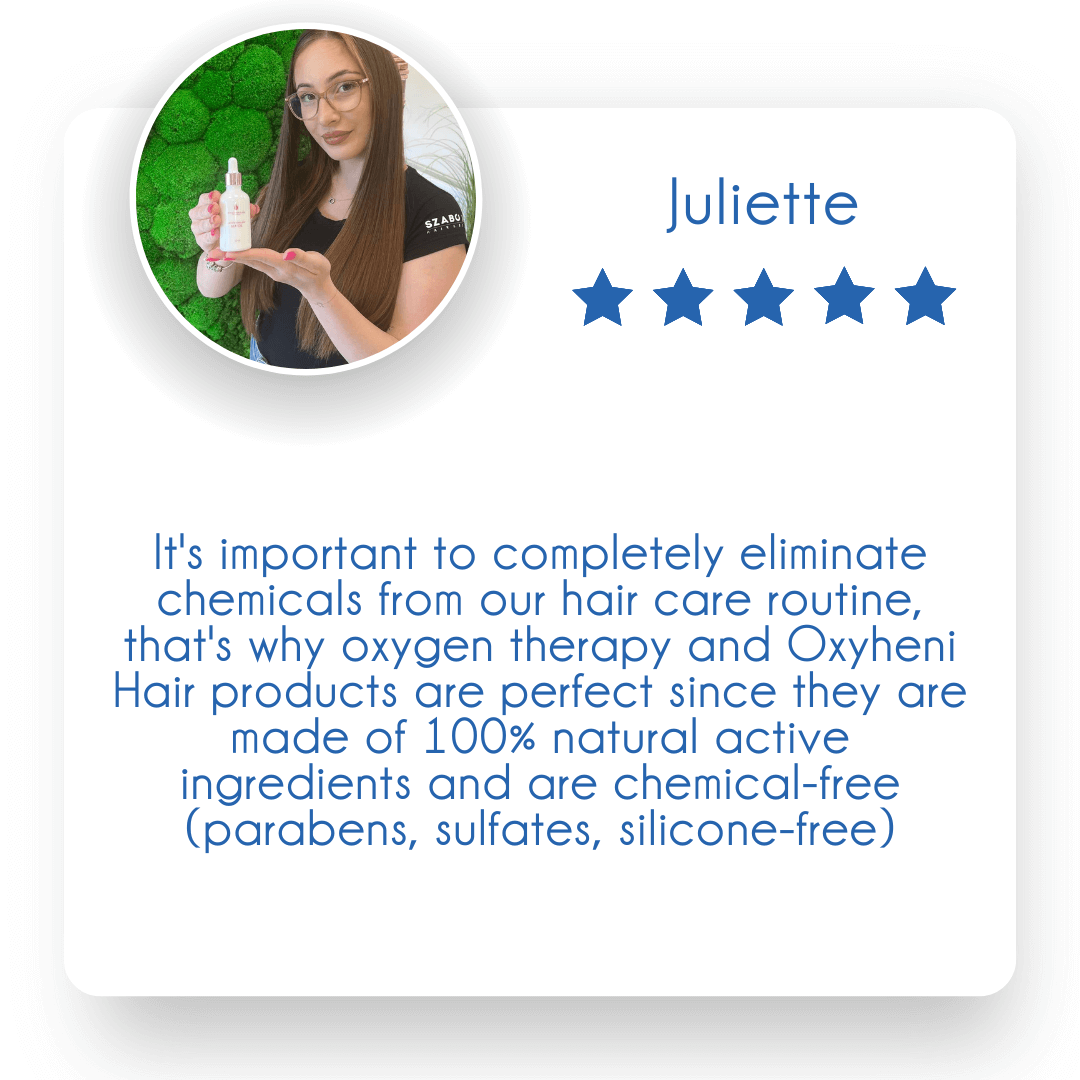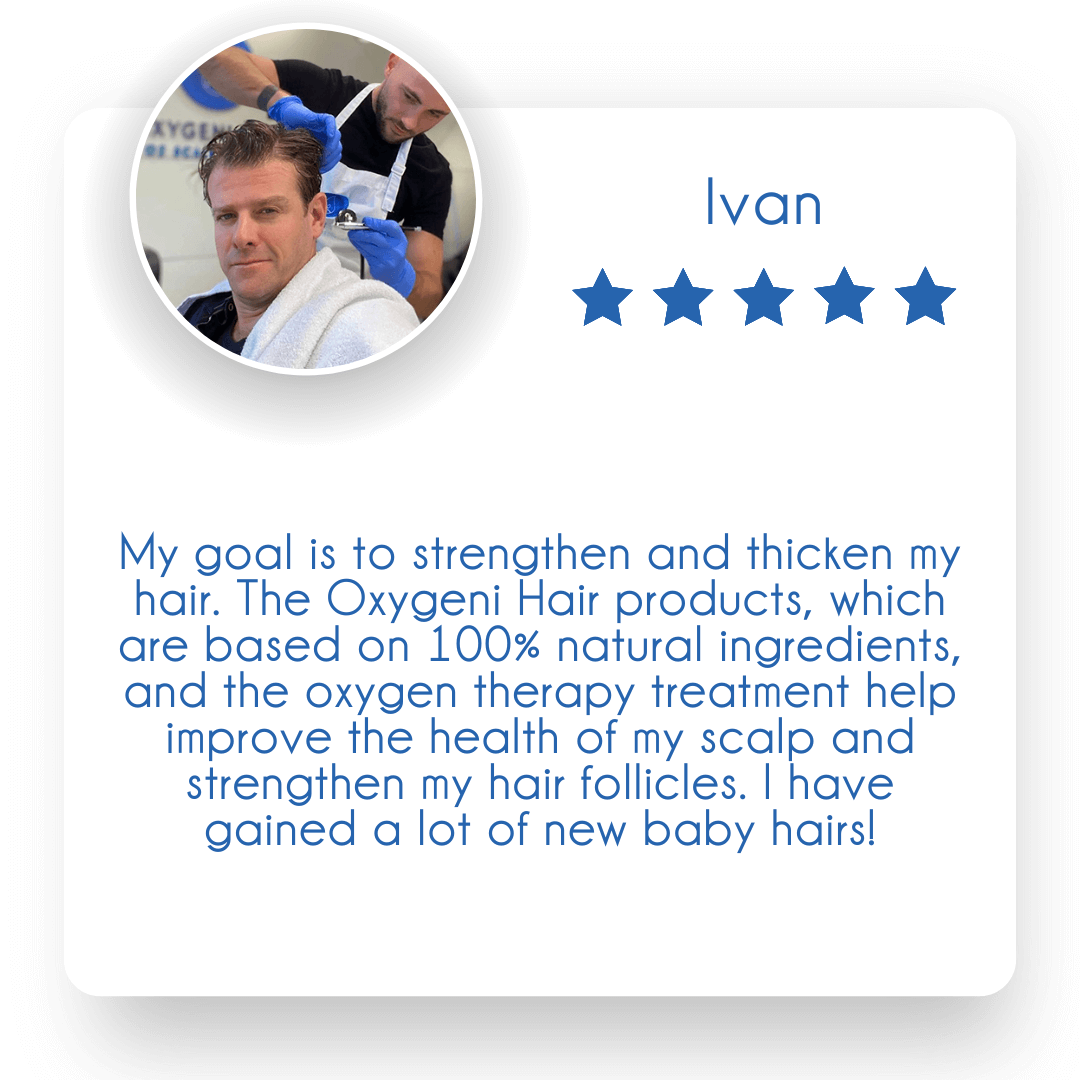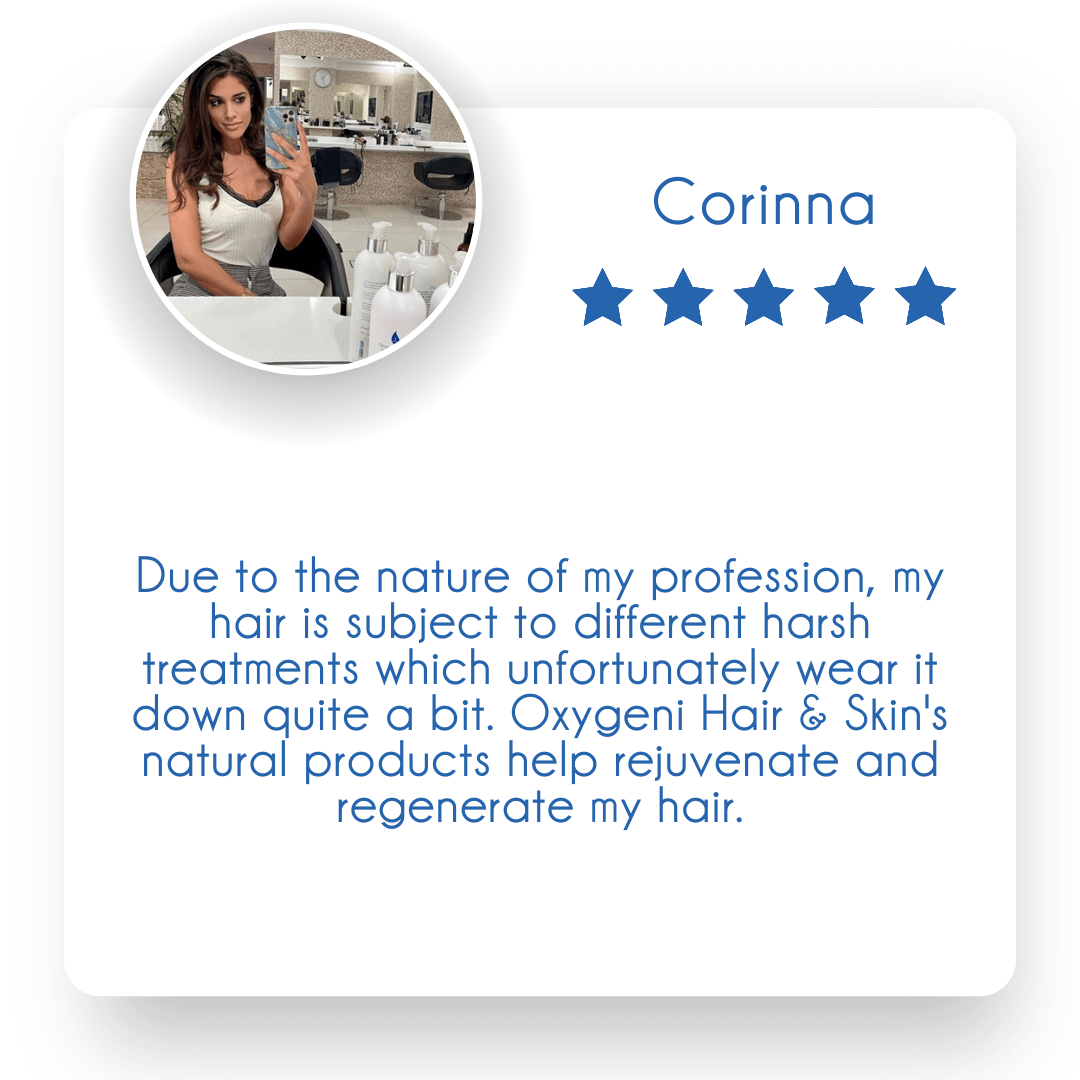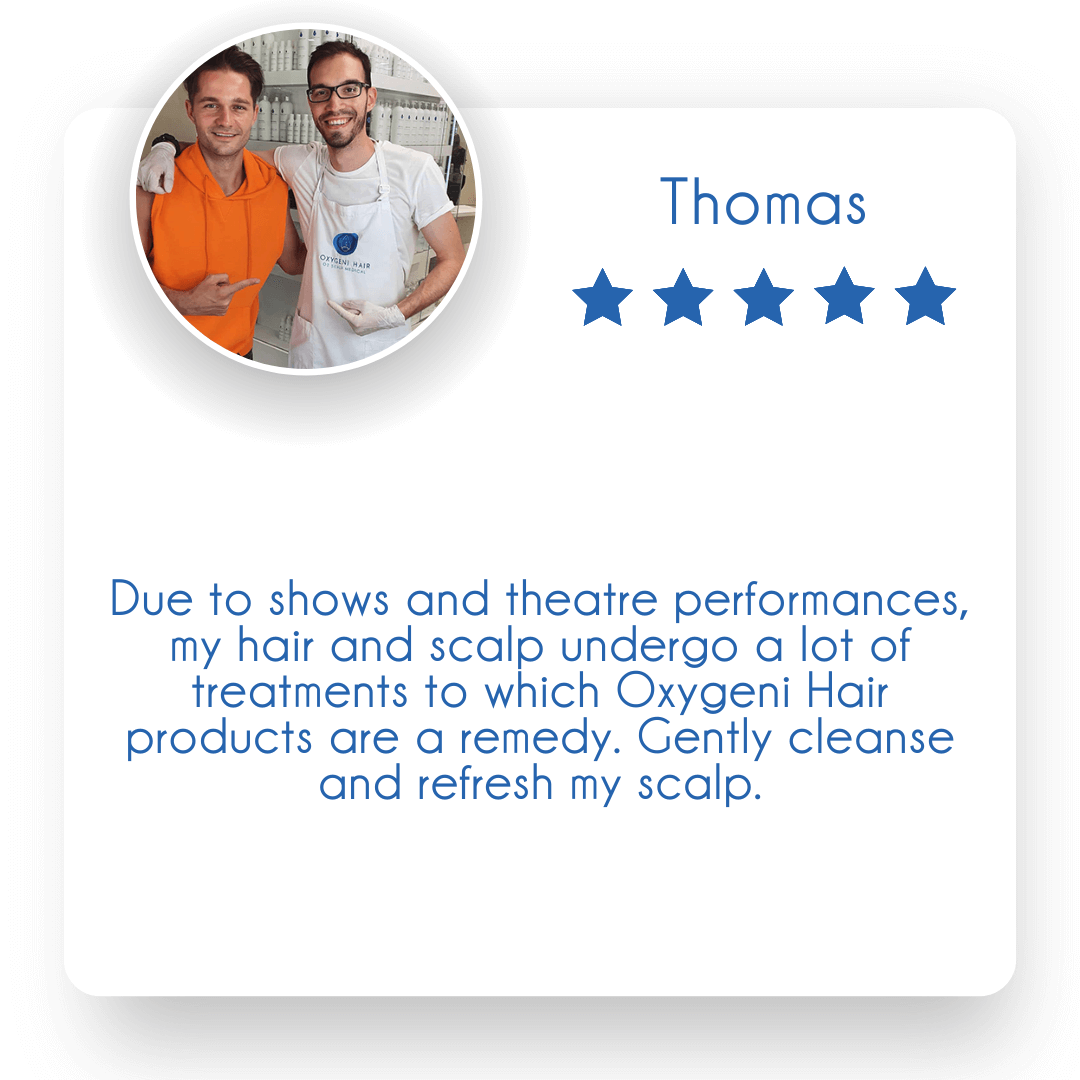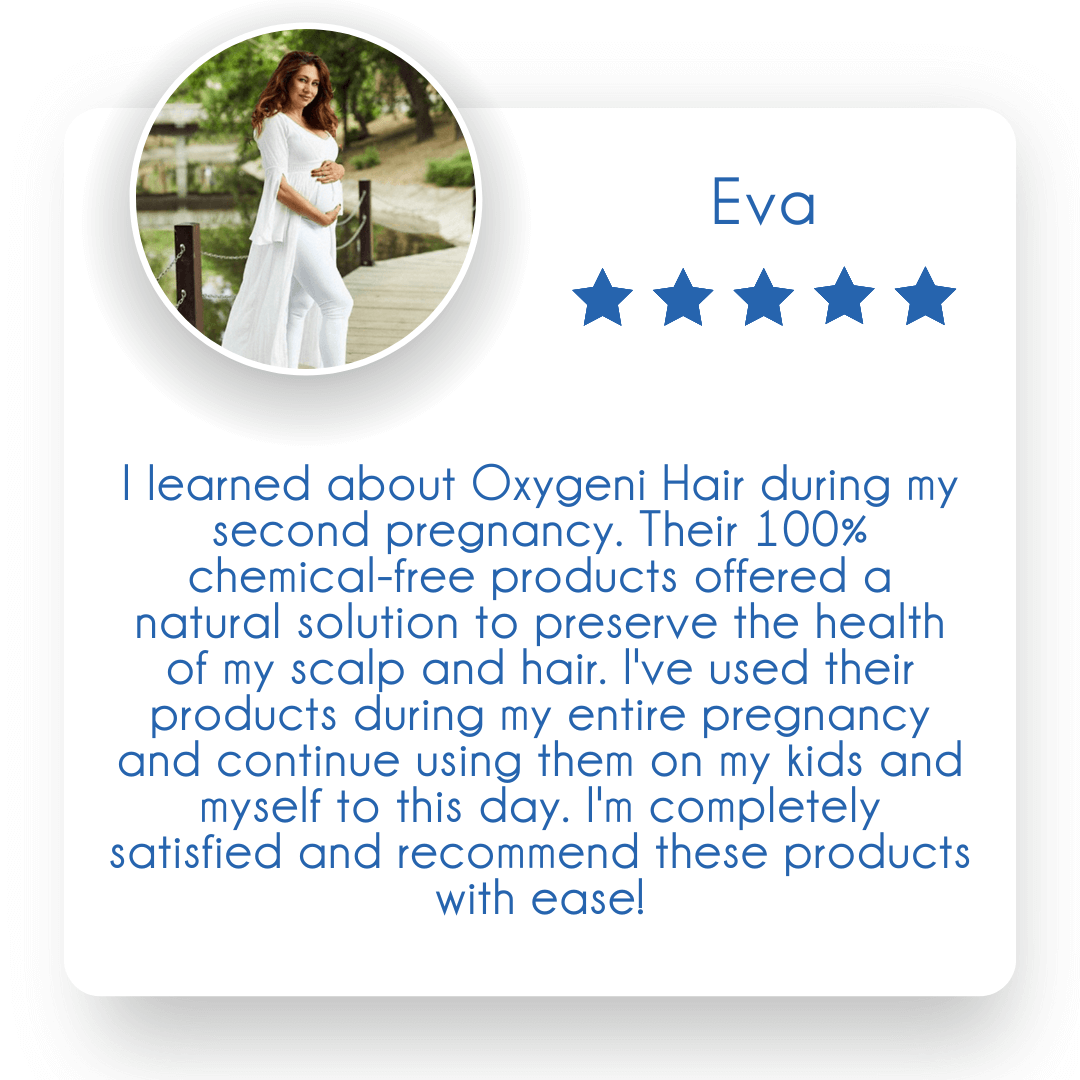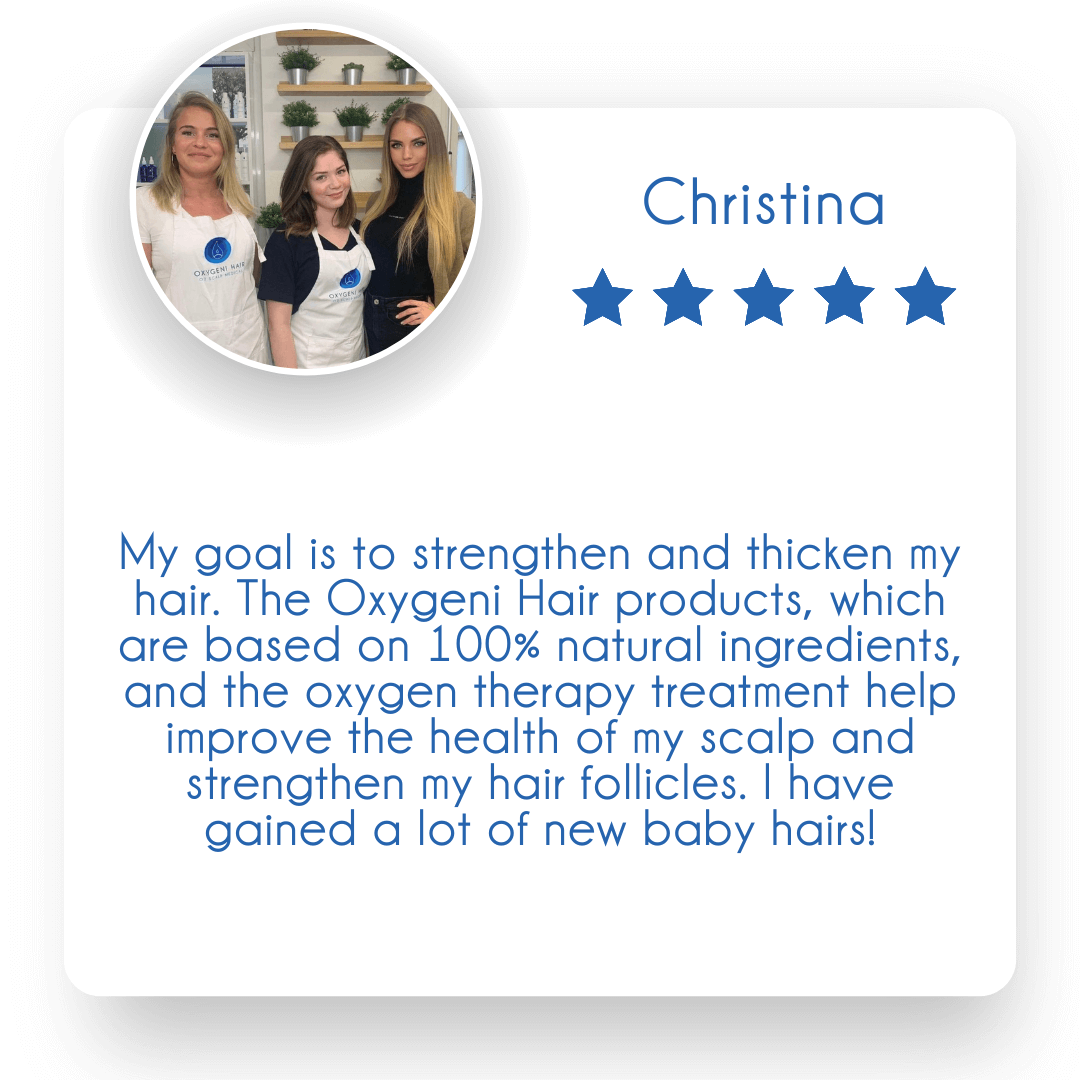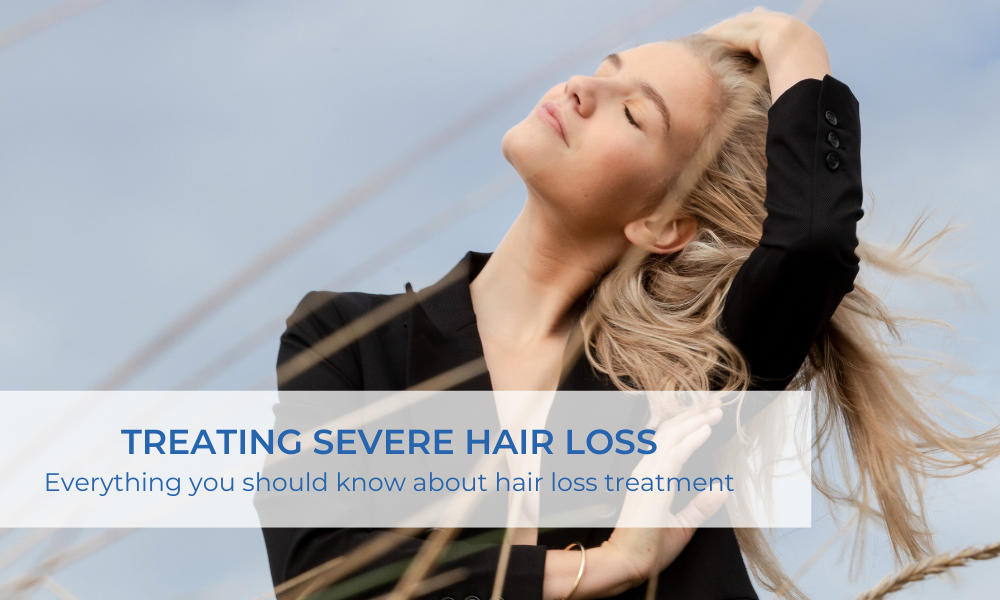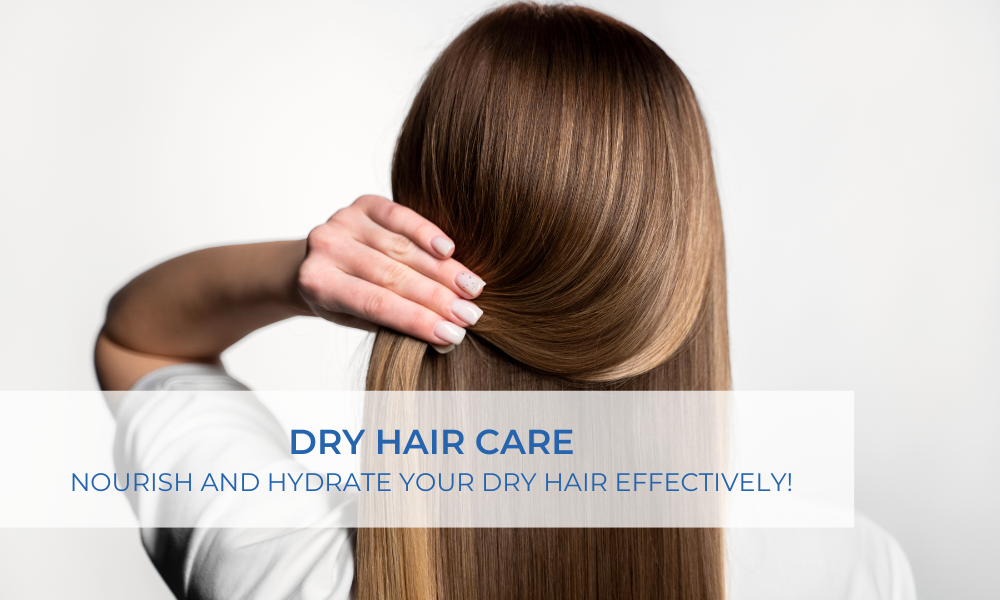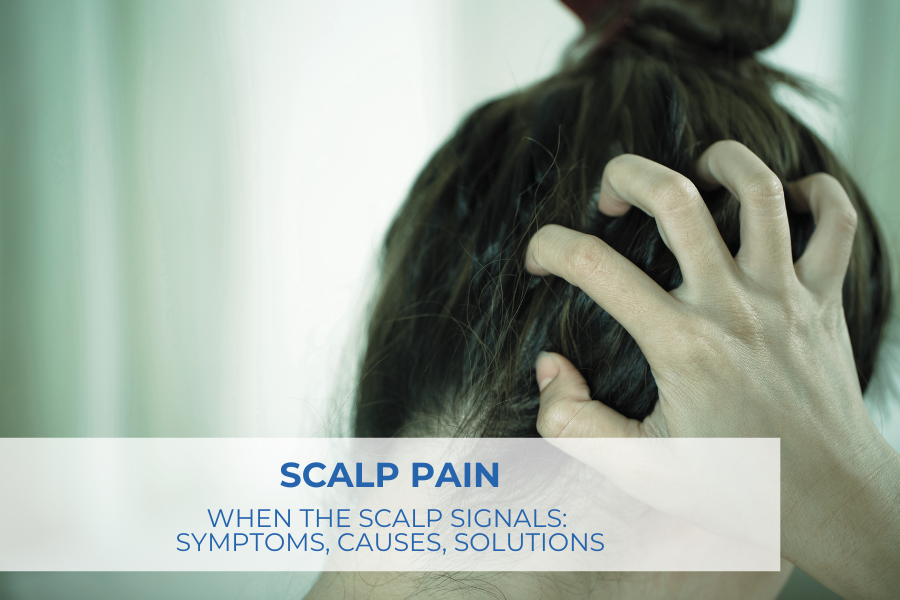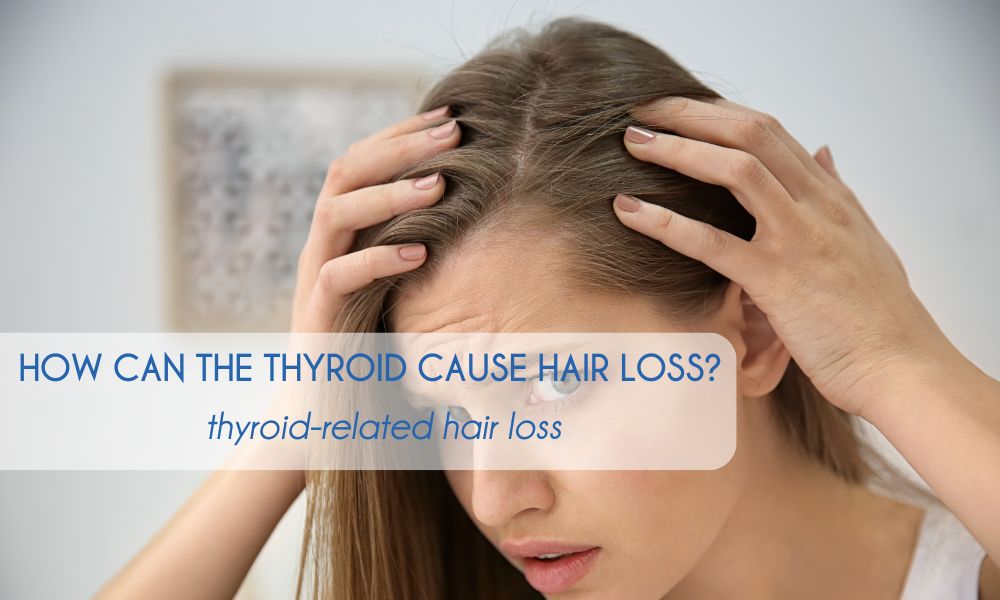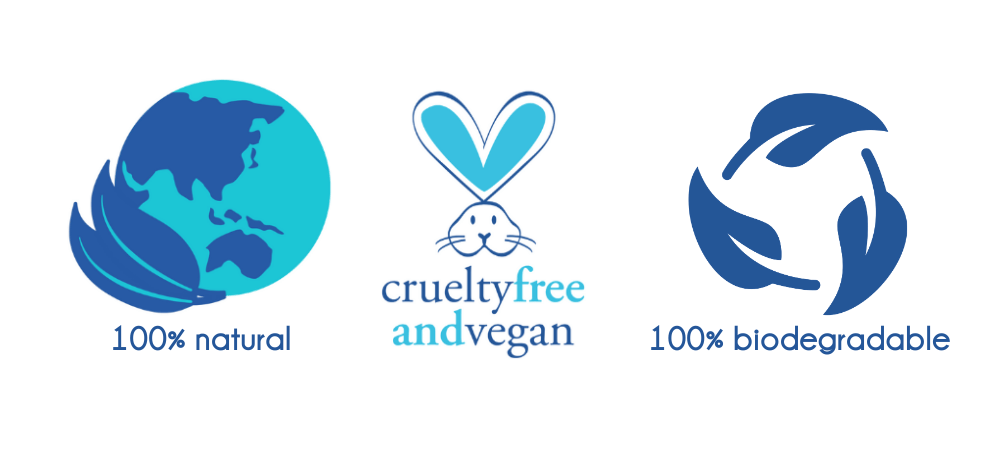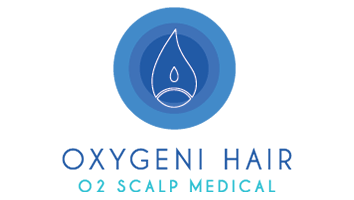Oily hair solutions
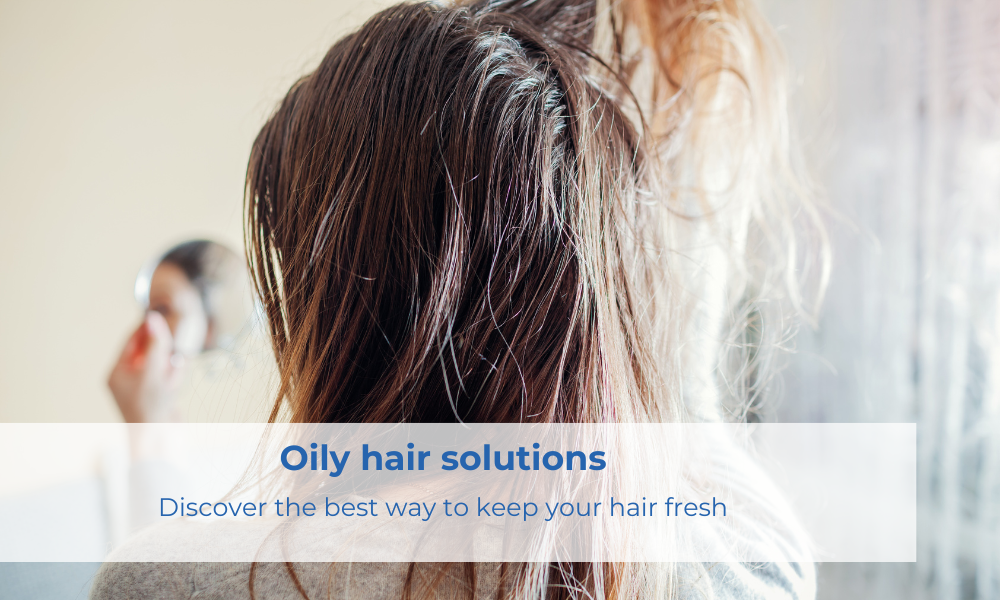
Oily hair solutions
Leave daily hair washing in the past!
Oily hair can be a daily issue for many, often caused by excessive sebum production. This can make the hair look unkept, even if it was recently washed. The condition may irritate the scalp and, in the long term, contribute to hair loss. Factors such as genetics, illnesses, hormonal changes, improper hair care, and environmental influences can contribute to the development of oily hair. Surprisingly, dry scalp can also lead to excess oil production, as the scalp compensates for its dryness. Understanding the cause of oily hair is essential before choosing any treatment.
Oily hair solutions not only affect appearance but also play a crucial role in maintaining a healthy scalp. Over-washing or the use of harsh chemicals can worsen the problem, while the right products and techniques can help restore balance. This article provides tips and solutions for those struggling with oily hair while ensuring scalp health is prioritized. If you’re dealing with oily hair and are looking for oily hair solutions this article is for you!
What causes oily hair?
The role of the sebaceous glands
Sebum is an oily substance produced by the sebaceous glands in the scalp and plays an important role in protecting the hair and scalp. Its main role is to provide moisture and keep the scalp in healthy condition. It prevents dryness and provides protection against external harmful effects such as pollution, air pollution, and UV radiation. Under normal circumstances, it is evenly distributed across the scalp, ensuring its proper moisture content and protection. However, when too much is produced, the hair can quickly become greasy, and the scalp may become itchy and irritated. Increased gland activity can cause hair follicle blockages, leading to pimples, hair loss, and other scalp issues.
Causes that can increase oiliness
Several factors can contribute to the development of oily hair, influencing the scalp’s oil production. One of the most determining factors is genetic predisposition – if several family members are affected, the likelihood of being prone to it is higher. Hormonal changes, such as puberty, the menstrual cycle, pregnancy, or menopause, can also impact the function of the sebaceous glands. Testosterone, in particular, can increase oil production, leading to faster greasiness of the hair.
Improper hair care habits can also contribute to the issue. Washing your hair too often or using harsh shampoos can irritate the scalp, which may then make the scalp compensate by producing more oil. At the same time, infrequent hair washing can also cause problems as excess sebum accumulates, creating a heavy, greasy residue.
Stress and poor nutrition – especially excessive fat and sugar intake – can also affect hormonal balance, indirectly increasing hair oiliness. Additionally, certain scalp conditions, such as seborrheic dermatitis or eczema, can cause inflammation around the glands, further increasing the oily residue and discomfort.
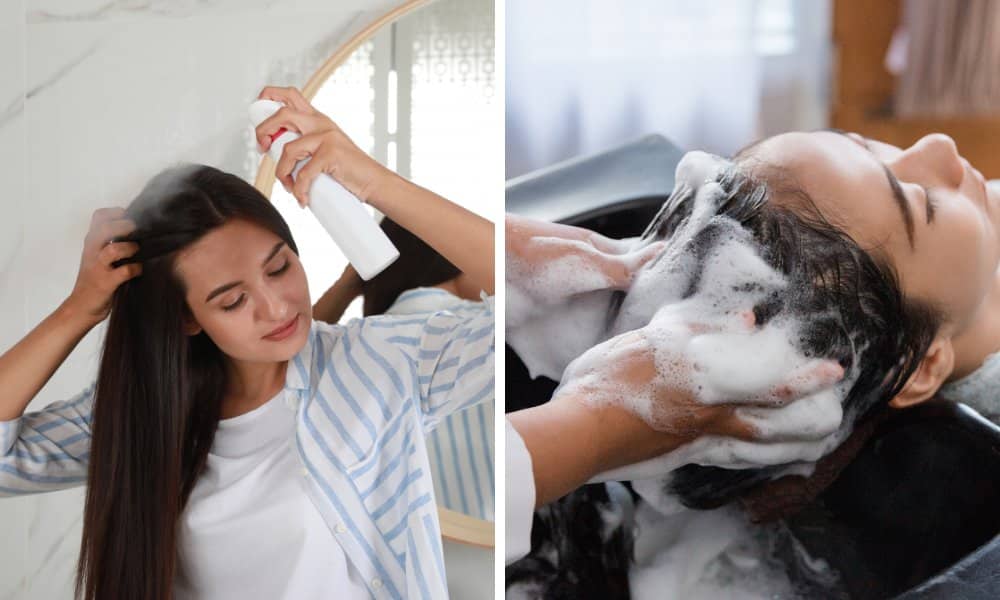
When are we talking about oily hair?
One of the most characteristic symptoms is rapid greasiness. If the hair becomes oily just a few hours after washing it, it is a sign that the scalp is producing excessive amounts of oil. In this case, the hair strands become heavy, and the roots quickly lose their clean, fresh appearance.
Oily hair not only comes with an oily residue at the roots but often with an itchy scalp as well. Excessive oil production can irritate the scalp, causing discomfort. If too much buildup accumulates around the hair follicles, it can obstruct proper ventilation of the scalp, making it more sensitive.
One characteristic of greasy hair is that it quickly flattens after washing because the oil that accumulates at the roots weighs down the hair strands. Many people find that no matter how much they try to style their hair, the hairstyle loses its hold quickly. Due to excessive oil production, the hair becomes heavier, volume disappears, and styling becomes much more difficult.
This can be particularly problematic for those who want voluminous or well-kept hairstyles, as the hair doesn’t hold the desired shape and easily flattens. Styling products like hairspray or mousse are less effective because the oily layer makes it harder for them to adhere properly. Additionally, greasiness may increase over time, causing the hairstyle to lose its freshness within hours, making frequent washing necessary.
Oily Hair Solutions
Choosing the right shampoo
Caring for oily hair begins with choosing the right shampoo. It’s important to select gentle, sulfate-free shampoos, as sulfates, while effective at cleaning, can irritate and overly dry the scalp. This can lead to the sebaceous glands overcompensating for the dryness by producing even more sebum. Sulfate-free shampoos do not overload the scalp, helping to prevent an increase in greasiness. Shampoos containing tea tree oil are particularly recommended for oily hair, as tea tree oil has antibacterial and antifungal properties. It helps keep the scalp clean while soothing inflammation and reducing excessive sebum production.
Hair washing habits
The frequency of hair washing plays an important role in caring for oily hair. While greasy hair may give the impression that it needs to be washed daily, the ideal frequency is actually 2-3 times a week at most. Washing hair too often can strip away the necessary natural oils from the hair and scalp, which provide protection. If we wash our hair too frequently, the sebaceous glands in the scalp respond by producing more oil to compensate for the lost protective layer. Additionally, it is important not to wash your hair too harshly, as this can also stimulate oil production. It’s best to wash your hair thoroughly but gently, ensuring the shampoo is applied only to the scalp and roots, not the entire hair length.
CONDITIONER
Using conditioner is also an important part of caring for oily hair, but it’s essential to apply it only to the hair ends. Conditioning the roots can overly burden the hair strands and contribute to faster greasiness. Conditioners contain nourishing and hydrating ingredients necessary for maintaining the hair ends, but at the roots, they can worsen the problem. For oily hair, apply the conditioner to the hair ends, and after the recommended time, rinse it thoroughly to avoid excess product buildup. This helps maintain the health of the hair without leading to quick greasiness. Using the right conditioner can keep the hair hydrated and shiny while preventing an oily residue at the roots.
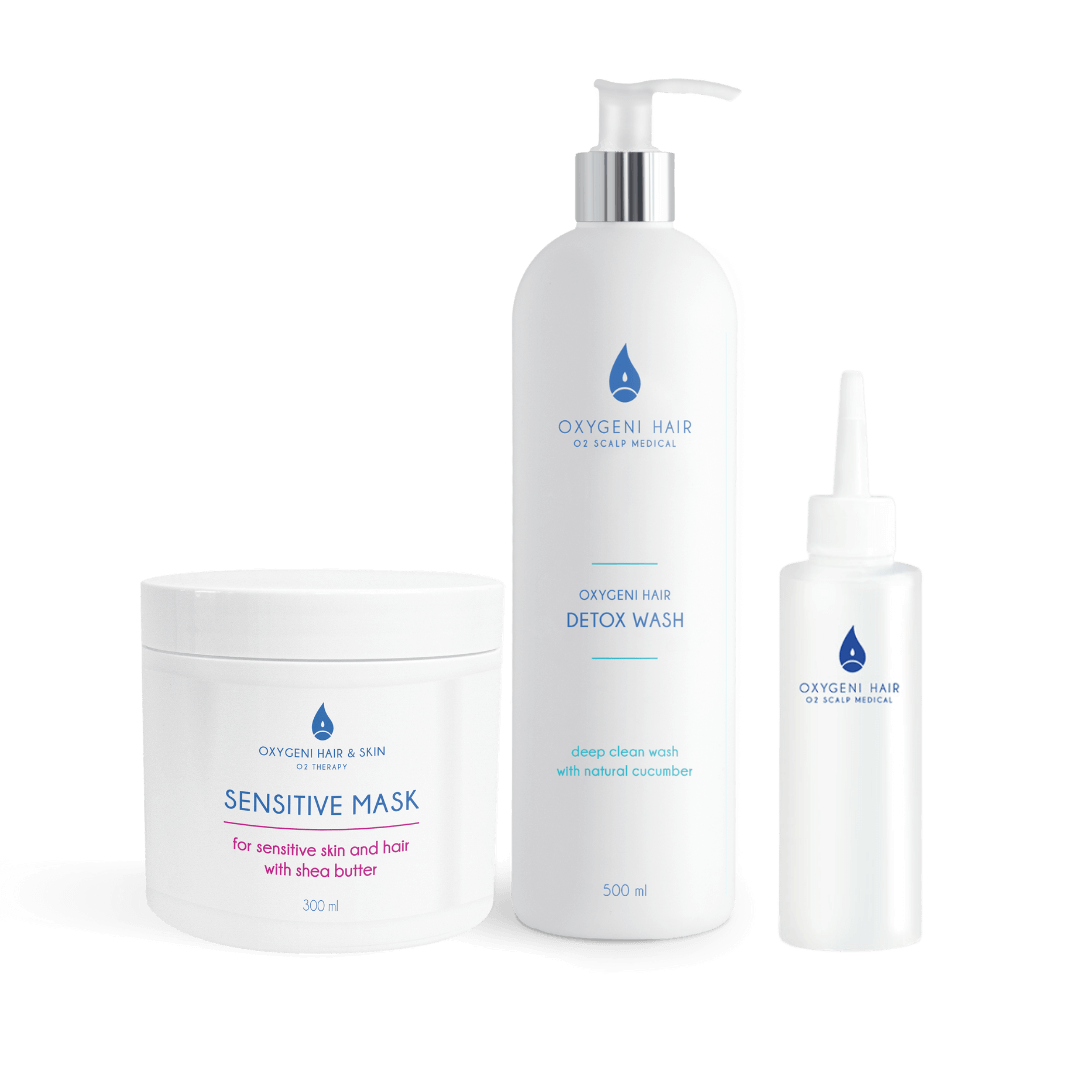
Oily Scalp Bundle
If you're struggling with an oily scalp and fine, easily weighed-down hair, here's the perfect solution for you! The Basic Bundle for oily scalps and fine, easily weighed-down hair offers a professional hair care routine that helps restore the freshness, volume, and health of your hair. The main ingredient of Detox Wash is cucumber extract, which helps regulate oiliness on the scalp. In addition to its powerful cleansing, astringent, and anti-inflammatory properties, it also helps with treating pigmentation spots. The Sensitive Mask helps regenerate dry hair strands, leaving your hair silky, soft, and easy to comb.
Cleaning hairbrushes and combs
Regular cleaning of combs and hairbrushes plays an important role in managing oily hair. While in use, these tools not only help with styling but also collect oil from the scalp, dead skin cells, residue from hair care products, and environmental pollutants. If the comb or brush is not cleaned regularly, these substances can return to freshly washed hair, leading to faster oiliness. It is best to clean your hair care tools thoroughly at least once a week. Warm water and a mild shampoo or a baking soda solution can be used to effectively remove grease and dirt. Always remove hair strands trapped between the teeth of the comb, as they can also contribute to the buildup of dirt.
Scalp massage
Scalp massage can be an effective method for treating oily hair, as it stimulates blood circulation and helps maintain scalp health. Although it may seem counterintuitive that massaging could help regulate excessive oil production, when done with the right technique, it can contribute to restoring balance in sebum production.
Regular scalp massage aids the delivery of nutrients and oxygen to the hair follicles, which can support the natural functioning of the scalp. However, it’s important to perform the massage gently, without excessive rubbing, as strong movements could stimulate oil production. For the best results, use your fingertips to make gentle, circular motions on the scalp, either on dry hair or during the shampooing process.
Oily hair and lifestyle
The role of nutrition
Nutrition plays a key role in the care and treatment of oily hair. What we eat affects not only our skin and hair but also the condition of our scalp. Consuming excessive amounts of greasy, sugary, and processed foods can contribute to hair becoming heavier and feeling oily more quickly. High-sugar foods and drinks, such as sodas and sweets, can raise insulin levels, which affects hormone balance and may indirectly increase oil production on the scalp. Excessive fat intake, especially trans fats and saturated fats, can have a similar effect.

In contrast, a nutrient-rich, balanced diet can help maintain the health of the scalp. Fresh vegetables and fruits support hormonal balance and can reduce inflammation, which positively impacts the condition of the hair. Foods rich in omega-3 fatty acids, such as salmon, mackerel, or herring, can contribute to maintaining scalp hydration due to their anti-inflammatory properties, thereby reducing excessive oiliness.
Importance of Hydration
Proper hydration is essential not only for your skin but also for your scalp. Insufficient water intake can lead to dryness, prompting sebaceous glands to overproduce oil as compensation. Drinking enough water helps maintain scalp balance, preventing excess oiliness and issues like dandruff. Aim for 1.5–2 liters daily, adjusting based on activity and climate. Additionally, hydrating foods like watermelon and cucumber support optimal hydration levels, keeping your scalp and hair healthy.
When to consult a professional?
Appearance of scalp problems
If, in addition to oily hair, scalp problems such as dandruff, itching, inflammation, or redness occur, it is advisable to consult a specialist. The health of the scalp is closely related to the condition of the hair, and if skin issues accompany the oiliness, it may indicate an underlying problem with the scalp. These scalp problems can stem from various causes, and without proper treatment, they can worsen. One of the most common issues is dandruff, which can be either dry or oily. Oily dandruff is often linked to excessive oiliness of the scalp and appears as yellowish, sticky flakes that are difficult to remove.
Itching and redness can also be warning signs, as they may indicate inflammation or irritation. The excess oil layer can promote the growth of bacteria and fungi, leading to various scalp conditions such as seborrheic dermatitis. This skin condition is characterized by persistent, oily dandruff, unpleasant itching, and is often associated with inflammation.
Another common problem is scalp sensitivity and redness, which can be triggered by irritating hair care products, frequent washing, or even stress. If the scalp remains irritated for an extended period, it can lead to hair loss or weakening of the hair follicles.
A trichologist can be very helpful in treating oily hair, offering personalized solutions to uncover and address the underlying causes of the problem. As a first step, the specialist conducts a scalp diagnosis, in which they manually and with a micro-camera examine the condition of the scalp, the cleanliness of the hair follicles, and the extent of buildup. This diagnosis helps determine which factors are contributing to the increased oiliness, allowing for a targeted treatment plan to be created accordingly.
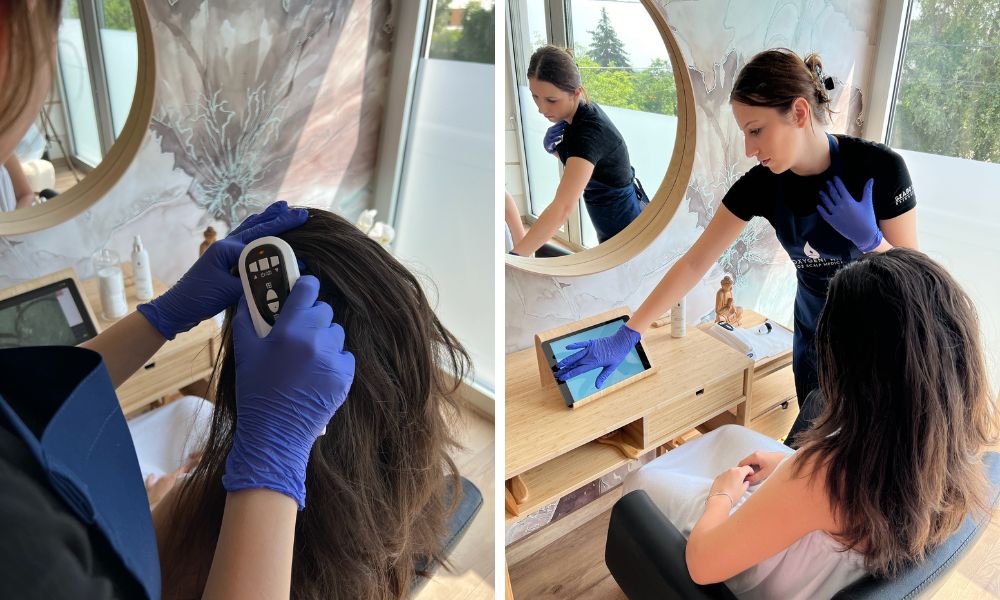
Hormonal changes or skin conditions
If hair problems are related to hormonal changes or skin diseases, it is essential to consult a specialist. Hormonal changes, such as puberty, pregnancy, menstrual cycles, contraception, or menopause, can all affect sebum production. Additionally, thyroid issues and hormonal imbalances can also increase the problem of oily hair. If your hair condition changes significantly due to hormonal changes, it is advisable to consult an endocrinologist to clarify the hormonal causes. Skin conditions, such as acne or psoriasis, can also cause excessive oiliness of the scalp. If you suspect that hormonal or skin diseases are behind the issue, it is worth getting a scalp diagnosis from a trichologist. With the help of the specialist, the exact cause of the problem can be determined, and a personalized treatment plan can be provided.
How can oxygen therapy help treat oily hair?
Oxygen therapy is an effective treatment that helps cleanse and regenerate the scalp, contributing to the improvement of hair health, especially in the case of oily hair. During the treatment, concentrated oxygen is supplied to the scalp, improving blood circulation and stimulating the hair follicles. As a result, nutrients and oxygen are delivered more effectively to the deepest layers of the scalp, which not only supports hair growth but can also help reduce excessive oiliness. Improving oxygen supply reduces inflammation, enhances the scalp’s condition, and helps restore its natural balance.
Oxygen therapy also has cell-renewing properties, helping to cleanse the scalp, alleviate inflammation, and stimulate skin regeneration. Increased oxygen supply improves cellular metabolism and promotes the healing of damaged skin, making it particularly useful in treating scalp conditions associated with oily hair. If the oily hair problem is caused by a skin condition or inflammation, oxygen therapy can act as an adjunct treatment, contributing to faster and more lasting improvement. The treatment not only has a beneficial effect on the scalp but also strengthens the hair strands, improving their elasticity and helping to restore hair health.
Oily hair myths
You have to wash your hair daily
Many people believe that washing oily hair daily removes excess sebum, but this is a misconception. Frequent washing can increase oil production, as the scalp dries out and sebaceous glands compensate by producing more oil. It’s better to wash your hair 2-3 times a week to maintain scalp hydration and cleanliness. Using sulfate-free, gentle shampoos helps control oiliness without harming the scalp.
Avoid conditioners
It’s a common misconception that oily hair doesn’t need conditioner because it may weigh down the roots and increase oiliness. When used correctly, conditioner can help make hair smoother, shinier, and more manageable. It should primarily be applied to the ends of the hair to avoid weighing down the roots while hydrating and nourishing the strands. Proper usage can prevent split ends and dryness, which can occur when only shampoo is used.
Oily hair doesn’t need care
A common misconception is that oily hair doesn’t need special care because it already appears oily. However, oily hair requires just as much attention as any other hair type. It’s essential to use gentle, cleansing shampoos that remove excess oil without irritating the scalp. Neglecting oily hair care can lead to further oil buildup, scalp inflammation, and potential hair loss over time. Proper care ensures healthier hair and scalp, reducing the risk of breakouts and other scalp issues.
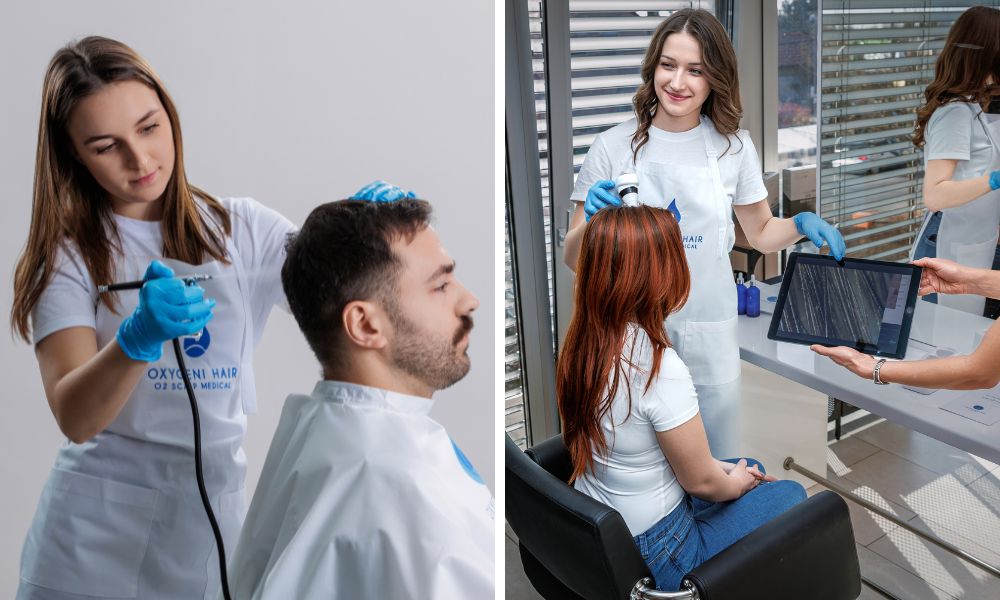
The care of oily hair can be effectively managed by establishing the right routine, and focusing on proper products and techniques to prevent excessive sebum production. Key steps include using gentle shampoos, such as sulfate-free or tea tree oil-based products, which regulate sebum without drying the scalp. Avoid washing hair too often, as daily washing can trigger more oil production. Washing 2-3 times a week is enough. A healthy lifestyle, including a balanced diet and proper hydration, also supports scalp health. Foods rich in vegetables, fruits, and omega-3 fatty acids are beneficial.
However, if you’re looking for a 100% reliable and risk-free solution, trichologic oxygen therapy is the right choice for you. The treatment is chemical-free, making it completely safe even for pregnant women or children. If you’d like to try it, feel free to sign up with us!
Writer: Villő Mihó
OXYGEN THERAPY AND OXYGENI HAIR PRODUCT REVIEWS

